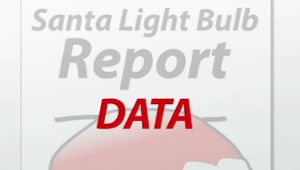Management Information Systems: Using Data to Manage Operations
After you watch the video and know the material, click HERE for the quiz.
Management information systems (MIS) are an important source of data for any organization. How that data is reviewed and analyzed is the responsibility of the managers, and in this lesson we will describe the role of MIS and how managers can use different types of data MIS can produce.
Managing Information
Have you ever thought about time travel? Going backward or forward in time would be a pretty cool thing to do. You could go back in time and relive parts of your life or go forward in time and see where you might end up or what your life might look like.
Now, we all know time travel is not possible (ummm, we do, right?). But one thing that is possible is going back in time to review information or data to help understand and manage our world better. We can also deploy some cool forecasting tools that can look into the future and give us an educated guess as to what might happen down the road.
 |
While it might seem odd, we are talking about management information systems (MIS), which is an organized computer system that gathers data from within and outside the company and processes it so it can be used by management. The truth is, MIS is a critical part of the management process and a key aspect of quantitative management. Simply put, without data, we cannot manage effectively because all we would be going on is our instincts and subjective observations. The data that MIS manages allows us to look back in time, study the present or predict what might happen in the future by collecting and analyzing data.
 |
Building a House
If we take a second to think about building a house, we can begin to get our heads around management information systems. I know it's a pretty far stretch, but stay with me and you'll begin to see what I mean.
Let's say you want to build a house. You show up at the building site and all the materials are there: wood, plumbing, carpeting, paint and anything else you could imagine that you would need. Now, go build the house. What's that? You don't know how?
Well, the same analogy can be used when we look at running a business. Managers don't just get up in the morning and start working. They need information - data - in order to know what they are doing or what needs to be done. That data comes from and is managed by the MIS and helps the manager to understand what he or she needs to do in order to run the business.
 |
Raw Data
Data has to be pulled from the data system the company uses in order to be assembled into something a manager can view and understand. The MIS houses raw data, and it is by no means organized and formatted for the manager to view. Rather, reports are compiled, saved and run at regular intervals to pull data from the system so it can be reviewed.
There are standard reports that most companies use (financial reports, inventory reports, etc.), and they help run the company on a day-to-day or week-to-week basis. Individuals in the company that are responsible for these areas regularly receive these reports to see if they have too much or not enough inventory, if sales are up or down or any other key aspect of business. This type of data is standard, if you will, and is the result of basic business needs.
 |
Data Looks Forward and Backward
Having reports that are standard is great, but they are not always going to give us the information we need to either look back or look ahead as we run a business. Knowing where you have been will help you to understand how you got to where you are now. Understanding that process will help you plan for the future. We have to remember, though, that we are talking about data, and it's up to the management team to interpret it and use it to plan for the future. So from time to time, managers ask for custom reports that might focus on a specific area or issue.
For example, let's say that you run some data regarding the sales of a particular item that is selling less than all of your other products. As you review the data, you see that there are months where the product simply does not sell. Consequently, those are also the months where your sales suffer and you struggle to make the money you need to keep the company going. This data tells you what happened in the past and why you're getting the results you have now. But how can it help you to plan for the future? After all, you're not looking at a magic crystal ball but merely data that you've reviewed to get an understanding of your current situation.
 |
Two Types of Data
It might sound a little funny, but all this data has a split personality. It can either be qualitative, which explains the how and the why through some type of inspection or viewing of a problem or issue, or quantitative, which measures how long or how often something is occurring through statistical analysis. So when managers are asking to review data so they can make accurate decisions, they need to understand what type of data they're getting.
It is easy to see how the quantitative data tells them how often something occurred or how long a situation has been present, but from that information they need to develop a qualitative analysis (the how and the why it is happening through first-hand observations or those of others). This might be the manager speaking with individuals or even asking for a different report.
 |
So while we have data, it cannot tell us everything we need to know and we still need a manager to come in and put together why it is happening or why the results are what they are.
Lesson Summary
Most management information systems give us quantitative data and it is up to the manager to take that information, blend it with qualitative data and then move towards a decision.
Remember, we have two types of data:
- Qualitative, which explains the how and the why through some type of inspection or viewing of a problem or issue
- Quantitative, which measures how long or how often something is occurring through statistical analysis
Taking these two sources and combining them helps a manager make informed decisions in the world of quantitative management. Thus, while the manager can ask for information, it is up to the management information system and people to pull that information and put it into a format that can be reviewed and assessed. Then the manager takes over and incorporates qualitative data to help reach a conclusion.